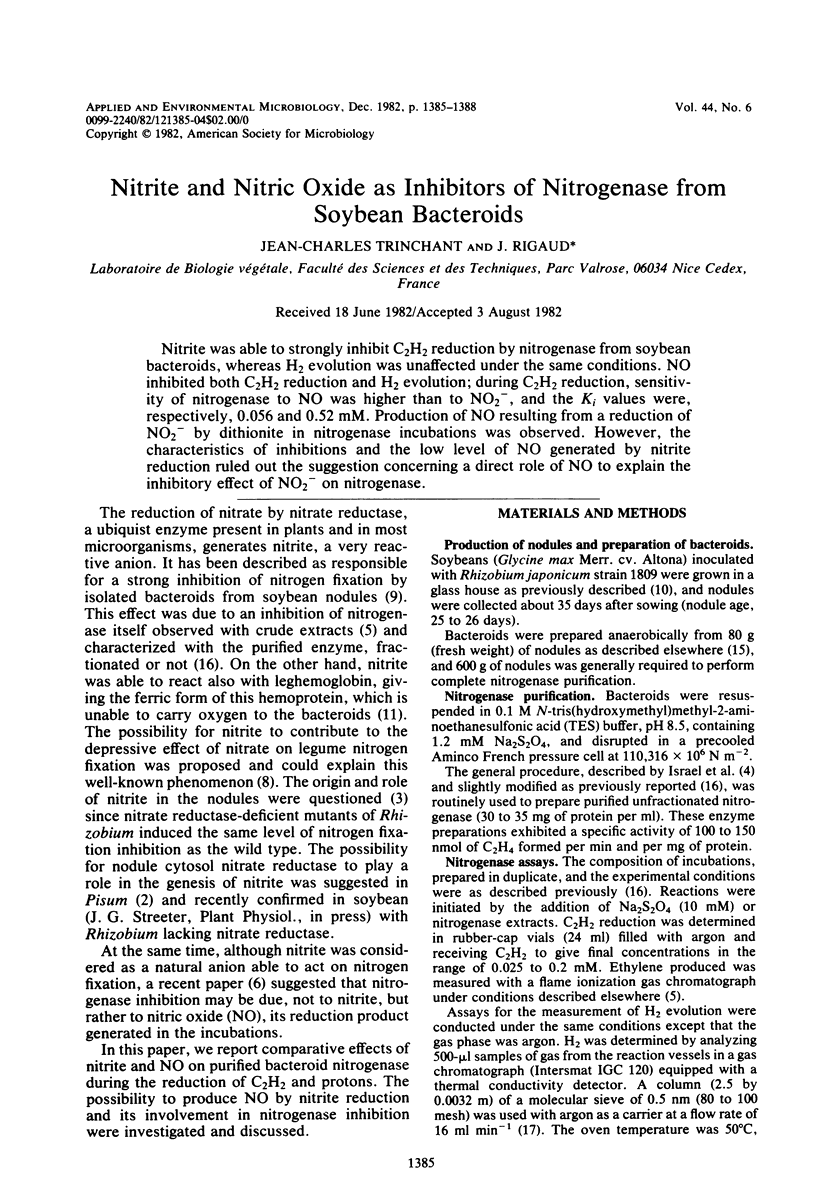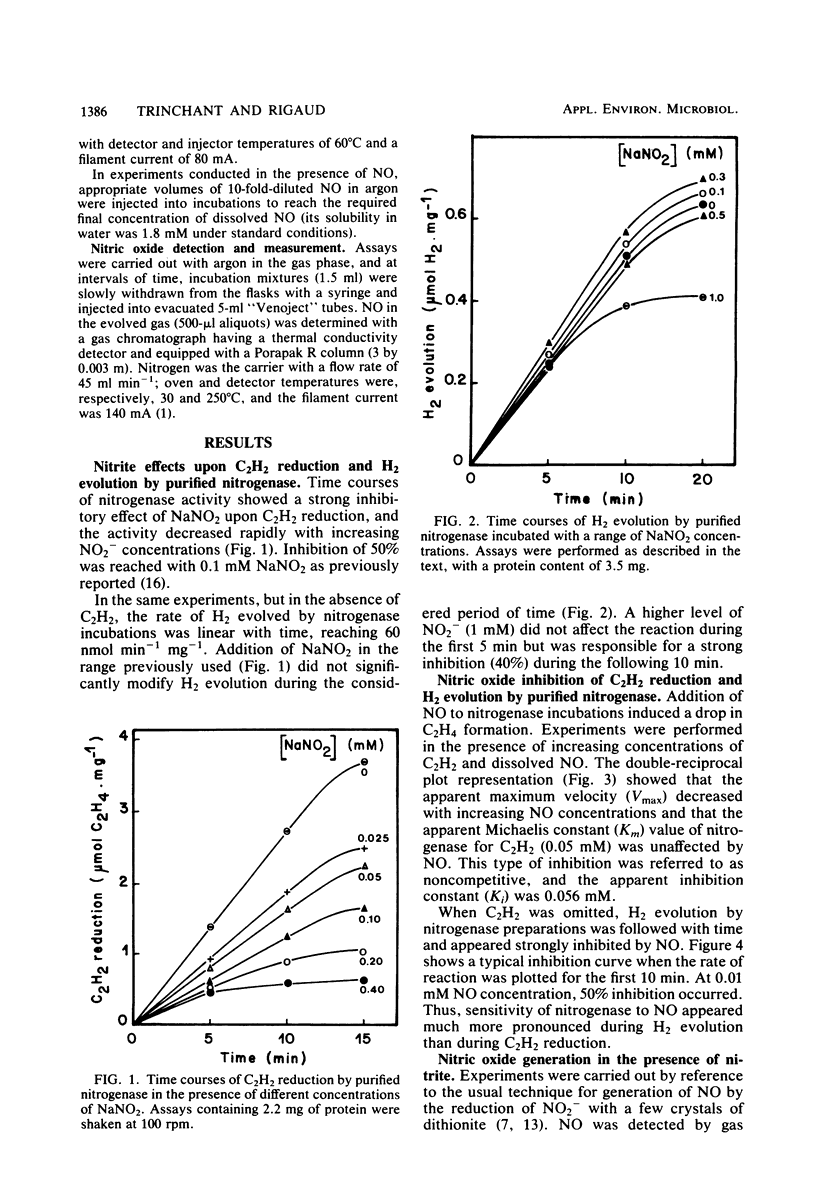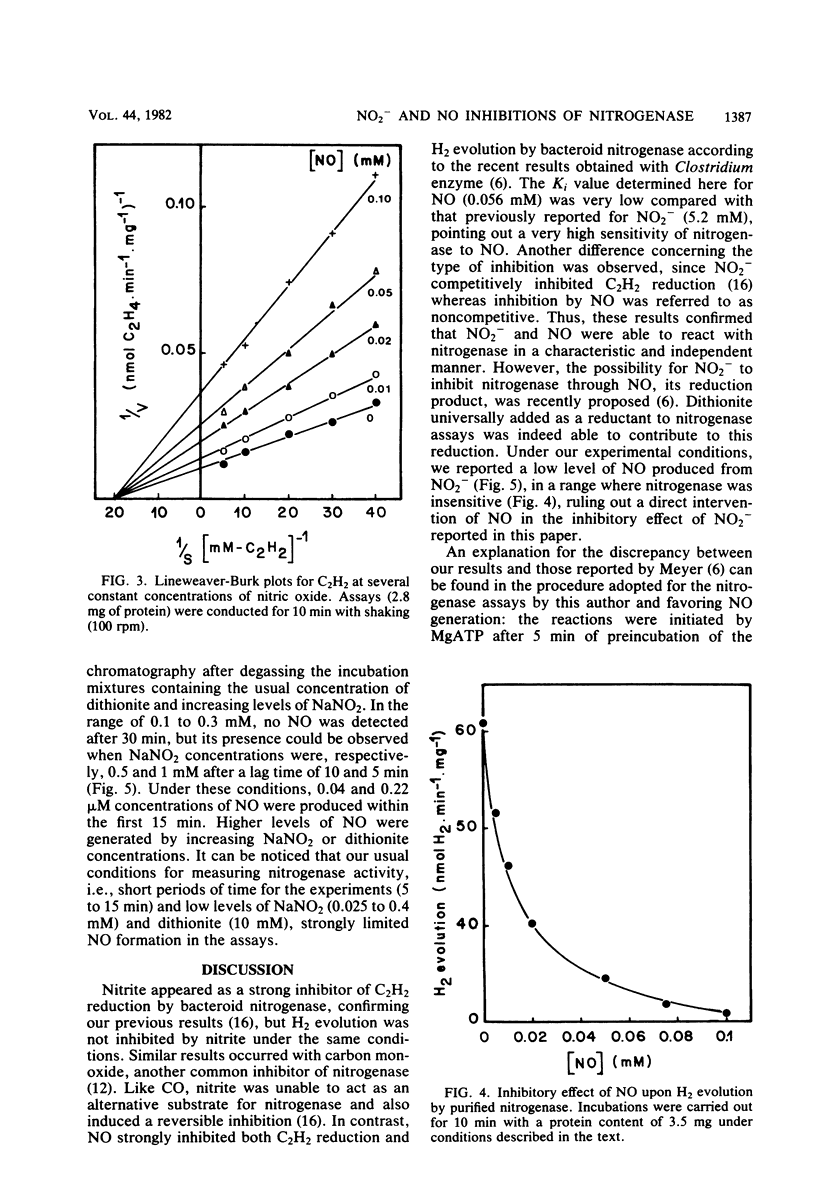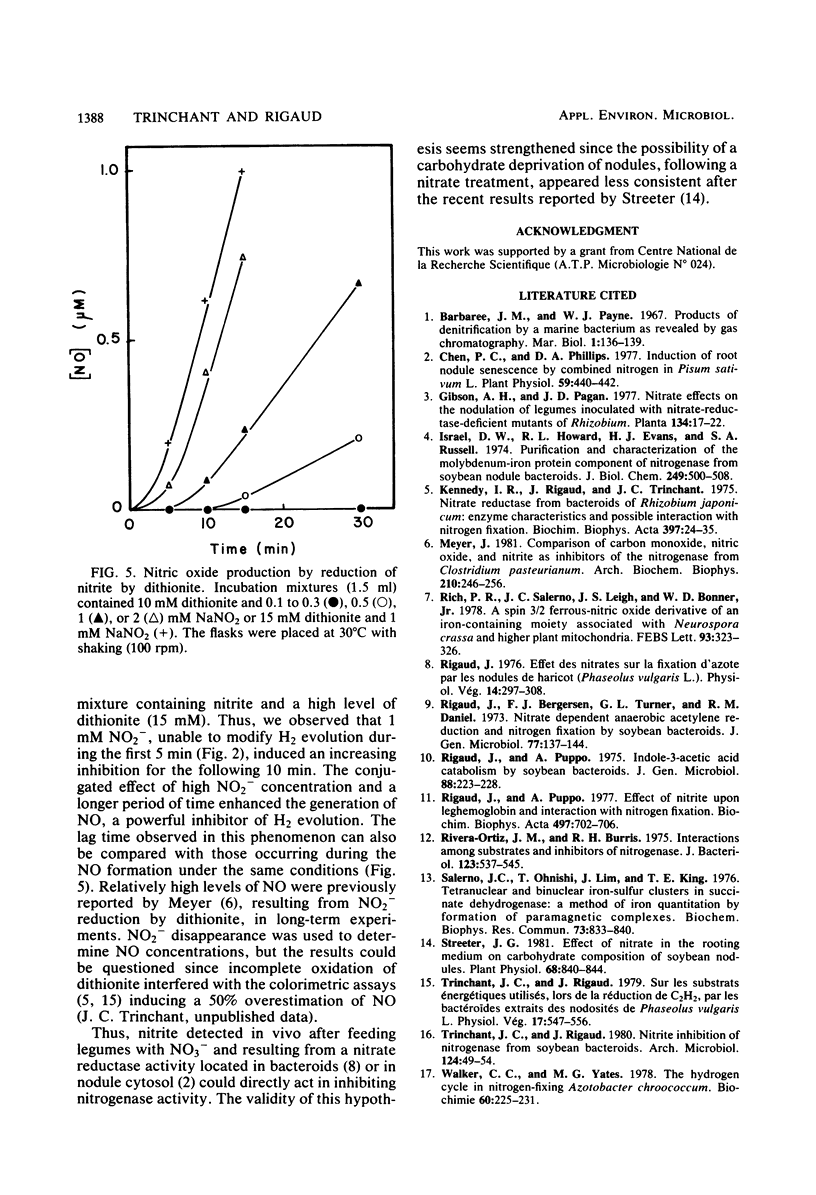Abstract
Nitrite was able to strongly inhibit C2H2 reduction by nitrogenase from soybean bacteroids, whereas H2 evolution was unaffected under the same conditions. NO inhibited both C2H2 reduction and H2 evolution; during C2H2 reduction, sensitivity of nitrogenase to NO was higher than to NO2−, and the Ki values were, respectively, 0.056 and 0.52 mM. Production of NO resulting from a reduction of NO2− by dithionite in nitrogenase incubations was observed. However, the characteristics of inhibitions and the low level of NO generated by nitrite reduction ruled out the suggestion concerning a direct role of NO to explain the inhibitory effect of NO2− on nitrogenase.
Full text
PDF



Selected References
These references are in PubMed. This may not be the complete list of references from this article.
- Chen P. C., Phillips D. A. Induction of Root Nodule Senescence by Combined Nitrogen in Pisum sativum L. Plant Physiol. 1977 Mar;59(3):440–442. doi: 10.1104/pp.59.3.440. [DOI] [PMC free article] [PubMed] [Google Scholar]
- Israel D. W., Howard R. L., Evans H. J., Russell S. A. Purification and characterization of the molybdenum-iron protein component of nitrogenase from soybean nodule bacteroids. J Biol Chem. 1974 Jan 25;249(2):500–508. [PubMed] [Google Scholar]
- Kennedy I. R., Rigaud J., Trinchant J. C. Nitrate reductase from bacteroides of Rhizobium japonicum: enzyme characteristics and possible interaction with nitrogen fixation. Biochim Biophys Acta. 1975 Jul 27;397(1):24–35. doi: 10.1016/0005-2744(75)90175-8. [DOI] [PubMed] [Google Scholar]
- Meyer J. Comparison of carbon monoxide, nitric oxide, and nitrite as inhibitors of the nitrogenase from Clostridium pasteurianum. Arch Biochem Biophys. 1981 Aug;210(1):246–256. doi: 10.1016/0003-9861(81)90186-7. [DOI] [PubMed] [Google Scholar]
- Rigaud J., Puppo A. Effect of nitrite upon leghemoglobin and interaction with nitrogen fixation. Biochim Biophys Acta. 1977 May 26;497(3):702–706. doi: 10.1016/0304-4165(77)90291-4. [DOI] [PubMed] [Google Scholar]
- Rivera-Ortiz J. M., Burris R. H. Interactions among substrates and inhibitors of nitrogenase. J Bacteriol. 1975 Aug;123(2):537–545. doi: 10.1128/jb.123.2.537-545.1975. [DOI] [PMC free article] [PubMed] [Google Scholar]
- Streeter J. G. Effect of nitrate in the rooting medium on carbohydrate composition of soybean nodules. Plant Physiol. 1981 Oct;68(4):840–844. doi: 10.1104/pp.68.4.840. [DOI] [PMC free article] [PubMed] [Google Scholar]
- Walker C. C., Yates M. G. The hydrogen cycle in nitrogen-fixing Azotobacter chroococcum. Biochimie. 1978;60(3):225–231. doi: 10.1016/s0300-9084(78)80818-9. [DOI] [PubMed] [Google Scholar]


